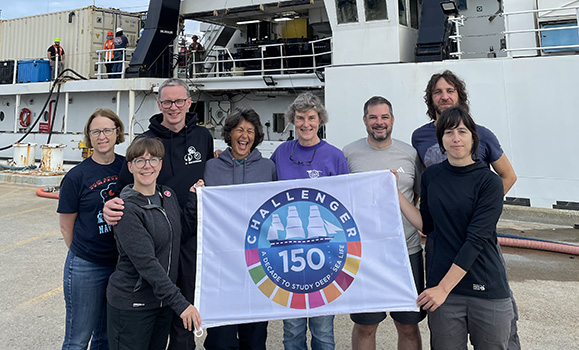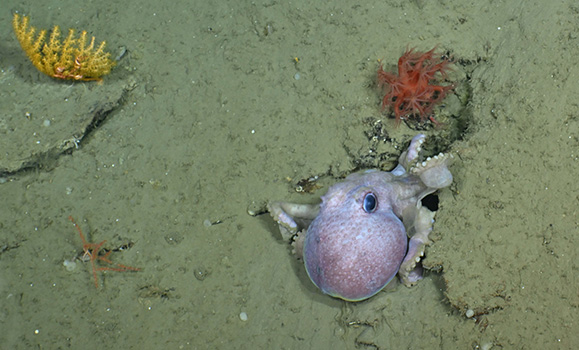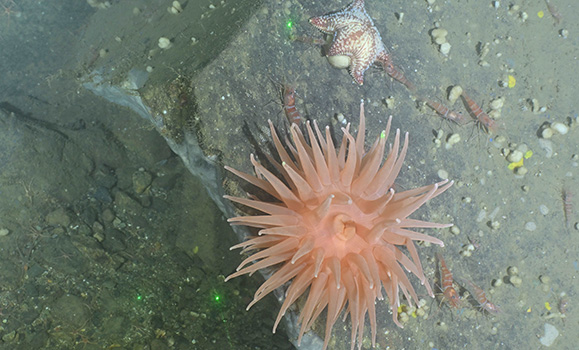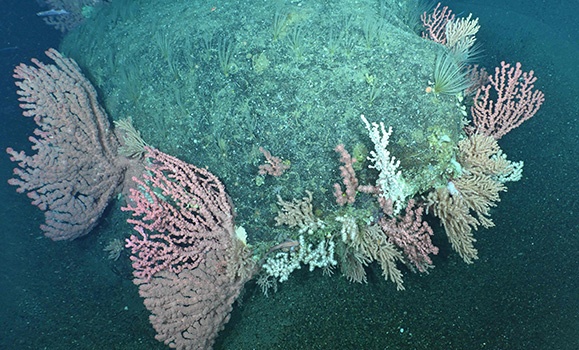A remote operated vehicle moves slowly across the rocky ocean floor, carefully navigating the course bottom that's covered in a carpet of fine brittle stars and elegant corals fans. Small orange fish flit past as the ROV (remotely operated vehicle) continues its movement more than 450 metres beneath the water's surface.
The scene — as magical as it is remote — is being captured in real time as part of a unique research project involving a team of scientists from Canada and the United States that is looking for and examining deep-sea corals to understand where they are and the environmental conditions of their habitats.
"Knowing this can help predict how their distribution may change with climate change, and understand how resilient their populations are to human pressures," says Dr. Anna Metaxas, a professor in Dal's Department of Oceanography who is part of the cross-border mission.
"We can also provide advice on the location of existing and future locations of conservation areas and help monitor existing ones."
Sampling growing corals
The researchers, including Dal's Dr. Craig Brown, Dr. Maria Rakka and Dr. Meri Bilan, are on the National Oceanic and Atmospheric Administration (NOAA) fisheries survey ship Henry B. Bigelow, looking for and sampling the slow-growing corals in the Atlantic Canyons and Gulf of Maine using the Canadian remotely operated submersible, ROPOS.

Science crew of CROCHET
It is the continuation of a 10-year, cross-border collaboration between Dr. Metaxas and Dr. Martha Nizinski of NOAA Fisheries. Nine scientists, six ROPOS engineers and 21 NOAA crew set out on July 18 and will be at sea for 14 days in total.  The group — the Cross Border Coral Habitat Exploration — has done dives in Oceanographer, Gilbert and Heezen canyons, two of which fall within the Northeast Canyons and Seamounts National Marine Monument.
In one outing following a transect along the canyon walls, they discovered extensive fields of the coral Paramuricea and the stony coral Desmophyllum in waters that dip to 5 degrees C.
The team then dove in Corsair Canyon, which is a Canadian marine refuge, where they found "the most spectacular forests of very large colonies of the bubblegum coral, Paragorgia that anyone on board had ever seen," says Dr. Metaxas. "Some of these colonies are hundreds of years old." 
The group is now visiting the Northeast Channel Coral Conservation Area, a marine refuge and part of the proposed Fundian Channel – Browns Bank Marine Protected Area now under review. They will monitor existing sites and collect baseline data from areas not visited before.
Following along with live video
The team is providing live updates on the ocean floor from the ROV through a that changes daily. Members also give a running commentary on what they are seeing, sometimes enthusing about the rockfish, squid, pink bubblegum coral, sponges, anemones and even a chubby halibut that pass by.

Octopus beneath the mushroom coral Anthomastus
"Swordfish!! We just saw a swordfish which was amazing!" one of the scientists called out excitedly as the sleek, blue fish darted past.
On Wednesday and Thursday, the ROV visited three locations where the team had been in 2001, 2006 and 2014 to measure changes in coral density and sizes to monitor the effectiveness of the conservation closure.
"We need to get baseline data so we can see what it looks like now so we can compare that to what it looks like in future to see if conservation measures are working," says Dr. Metaxas.
"It's very important to go back to these areas, especially now to have this long-term series."

Anemone at 180 m in the Gulf of Maine
The federal Fisheries Department is supporting the project through the Oceans Management Contribution Program, which allowed the team of scientists to secure and operate the ROV on the cruise. NOAA is providing the ship.
.

